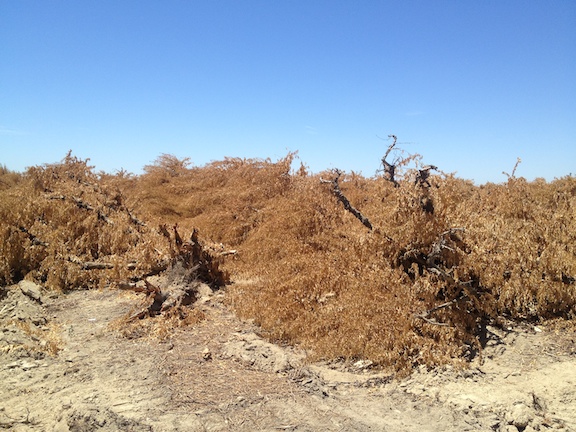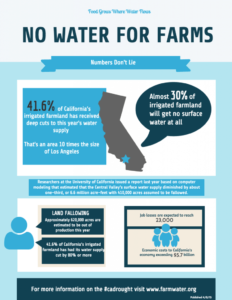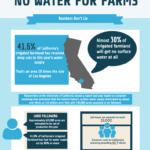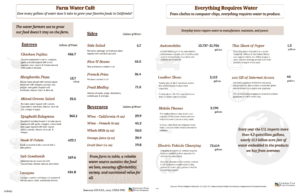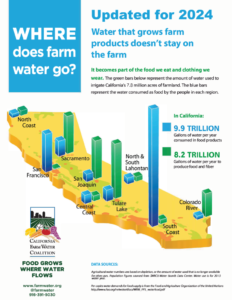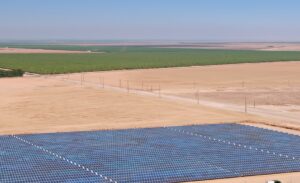Farmers first to be hit with water supply cuts
Farmers have been the first to feel the effects of the drought because of mandatory water supply cuts. Last year saw an unprecedented amount of farm water cuts – zero water – for vast parts of the state and 2015 will be worse. Stories like this don’t often make the news but the U.S. Bureau of Reclamation has already announced that over 2 million acres of agricultural land that receive Central Valley Project water will receive zero supply again this year. That is an area roughly two and a half times the size of the Los Angeles Basin. Farms that receive water from the State Water Project have been cut by 80 percent. In 2014 a study on the impacts of the 2014 drought by UC Davis economists estimated 429,000 acres statewide were fallowed. The study cited a $2.2 billion loss to the state’s farming industry and a loss of over 17,000 on-farm jobs.
Governor Jerry Brown on ABCNews This Week commented:
“If you don’t want to produce any food and import it from some other place, of course you could do that. But that would displace hundreds of thousands of people and I don’t think it’s needed.”
Water transfers are a stop gap measure
Farmers with other water sources have experienced similar reductions. Transfer water from other sources come with a high price tag, up to $2,000 per acre-foot. Significant amounts of groundwater were also pumped last year because farmers had no alternative. That is not sustainable. Water supply cuts on the farm often lead to fallowing, which means crops aren’t being planted. But fallowing is also a tool to reduce water demand in one region to make water supplies available to transfer to more parched areas of the state. Rice farmers in the Sacramento Valley are often willing partners in helping to solve this water supply imbalance by fallowing their fields to make water available for transfers. But droughts can also have a negative effect on waterfowl and other wildlife. California Rice fields provide essential habitat for nearly 230 wildlife species.
Water use efficiency has helped stretch existing supplies
At the same time, California farmers are investing in upgrading irrigation systems. From 2003 through 2013 farmers throughout California have spent about $3 billion to install more efficient irrigation systems on almost 2.5 million acres, or about a third of the state’s irrigated farmland. That’s an investment one and one-half times the amount spent by Southern California water users to build Diamond Valley Lake near Hemet.
